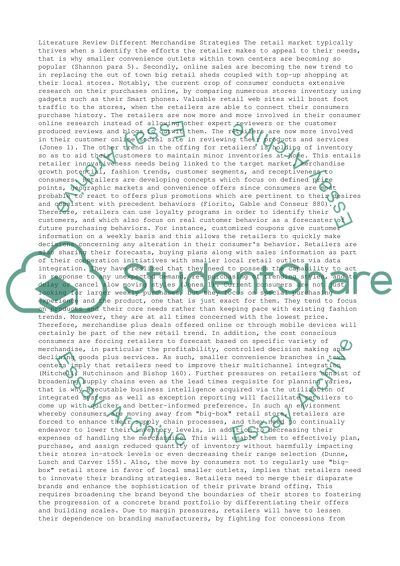Different Merchandise Strategies Research Paper Example | Topics and Well Written Essays - 750 words. Retrieved from https://studentshare.org/management/1448408-literature-review-paper
Different Merchandise Strategies Research Paper Example | Topics and Well Written Essays - 750 Words. https://studentshare.org/management/1448408-literature-review-paper.


